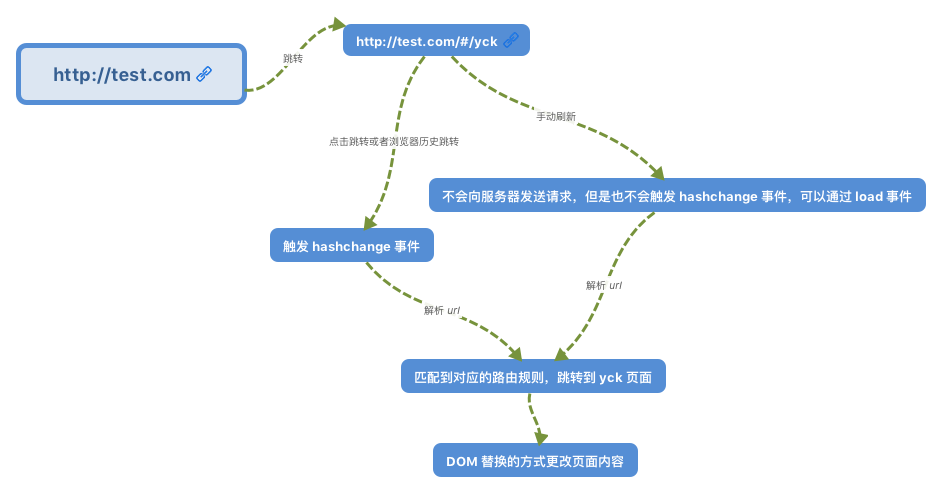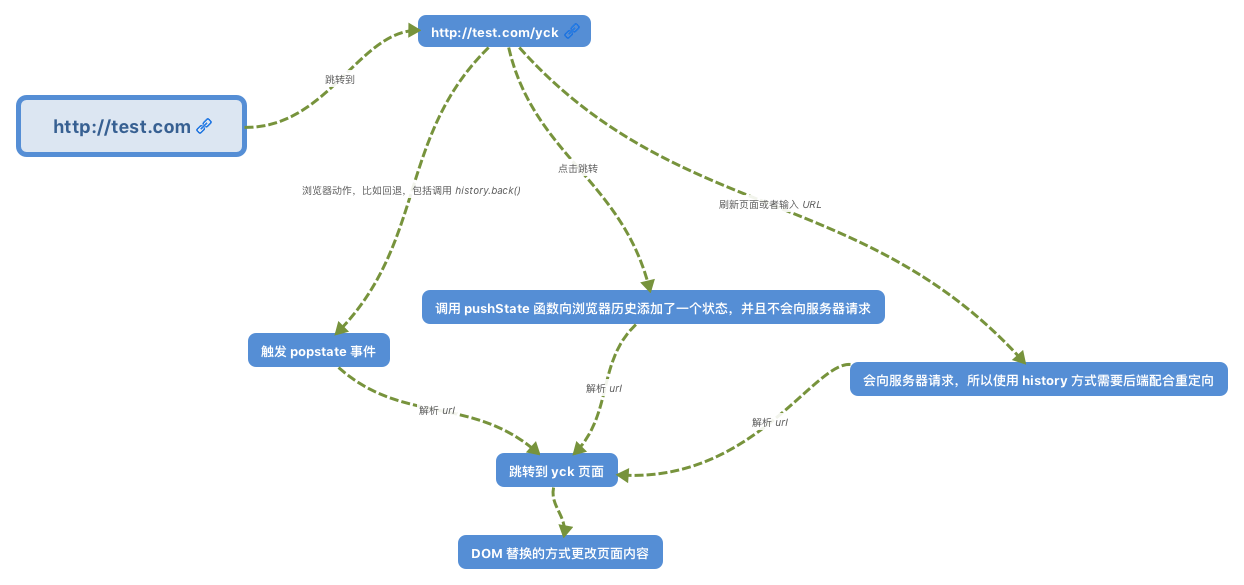为什么需要 Virtual Dom
众所周知,操作 DOM 是很耗费性能的一件事情,既然如此,我们可以考虑通过 JS 对象来模拟 DOM 对象,毕竟操作 JS 对象比操作 DOM 省时的多。
举个例子
// 假设这里模拟一个 ul,其中包含了 5 个 li ;[1, 2, 3, 4, 5][ // 这里替换上面的 li (1, 2, 5, 4) ]
从上述例子中,我们一眼就可以看出先前的 ul 中的第三个 li 被移除了,四五替换了位置。
如果以上操作对应到 DOM 中,那么就是以下代码
// 删除第三个 li ul.childNodes[2].remove() // 将第四个 li 和第五个交换位置 let fromNode = ul.childNodes[4] let toNode = node.childNodes[3] let cloneFromNode = fromNode.cloneNode(true) let cloenToNode = toNode.cloneNode(true) ul.replaceChild(cloneFromNode, toNode) ul.replaceChild(cloenToNode, fromNode)
当然在实际操作中,我们还需要给每个节点一个标识,作为判断是同一个节点的依据。所以这也是 Vue 和 React 中官方推荐列表里的节点使用唯一的 key 来保证性能。
那么既然 DOM 对象可以通过 JS 对象来模拟,反之也可以通过 JS 对象来渲染出对应的 DOM
以下是一个 JS 对象模拟 DOM 对象的简单实现
export default class Element { /** * @param {String} tag 'div' * @param {Object} props { class: 'item' } * @param {Array} children [ Element1, 'text'] * @param {String} key option */ constructor(tag, props, children, key) { this.tag = tag this.props = props if (Array.isArray(children)) { this.children = children } else if (isString(children)) { this.key = children this.children = null } if (key) this.key = key } // 渲染 render() { let root = this._createElement( this.tag, this.props, this.children, this.key ) document.body.appendChild(root) return root } create() { return this._createElement(this.tag, this.props, this.children, this.key) } // 创建节点 _createElement(tag, props, child, key) { // 通过 tag 创建节点 let el = document.createElement(tag) // 设置节点属性 for (const key in props) { if (props.hasOwnProperty(key)) { const value = props[key] el.setAttribute(key, value) } } if (key) { el.setAttribute('key', key) } // 递归添加子节点 if (child) { child.forEach(element => { let child if (element instanceof Element) { child = this._createElement( element.tag, element.props, element.children, element.key ) } else { child = document.createTextNode(element) } el.appendChild(child) }) } return el } }
Proxy 与 Object.defineProperty 对比
Object.defineProperty 虽然已经能够实现双向绑定了,但是他还是有缺陷的。
- 只能对属性进行数据劫持,所以需要深度遍历整个对象
- 对于数组不能监听到数据的变化
虽然 Vue 中确实能检测到数组数据的变化,但是其实是使用了 hack 的办法,并且也是有缺陷的。
const arrayProto = Array.prototype export const arrayMethods = Object.create(arrayProto) // hack 以下几个函数 const methodsToPatch = [ 'push', 'pop', 'shift', 'unshift', 'splice', 'sort', 'reverse' ] methodsToPatch.forEach(function(method) { // 获得原生函数 const original = arrayProto[method] def(arrayMethods, method, function mutator(...args) { // 调用原生函数 const result = original.apply(this, args) const ob = this.__ob__ let inserted switch (method) { case 'push': case 'unshift': inserted = args break case 'splice': inserted = args.slice(2) break } if (inserted) ob.observeArray(inserted) // 触发更新 ob.dep.notify() return result }) })
反观 Proxy 就没以上的问题,原生支持监听数组变化,并且可以直接对整个对象进行拦截,所以 Vue 也将在Vue3中使用 Proxy 替换 Object.defineProperty
let onWatch = (obj, setBind, getLogger) => { let handler = { get(target, property, receiver) { getLogger(target, property) return Reflect.get(target, property, receiver) }, set(target, property, value, receiver) { setBind(value) return Reflect.set(target, property, value) } } return new Proxy(obj, handler) } let obj = { a: 1 } let value let p = onWatch( obj, v => { value = v }, (target, property) => { console.log(`Get '${property}' = ${target[property]}`) } ) p.a = 2 // bind `value` to `2` p.a // -> Get 'a' = 2
数据劫持
Vue 内部使用了 Object.defineProperty() 来实现双向绑定,通过这个函数可以监听到 set 和 get 的事件。
var data = { name: 'yck' } observe(data) let name = data.name // -> get value data.name = 'yyy' // -> change value function observe(obj) { // 判断类型 if (!obj || typeof obj !== 'object') { return } Object.keys(obj).forEach(key => { defineReactive(obj, key, obj[key]) }) } function defineReactive(obj, key, val) { // 递归子属性 observe(val) Object.defineProperty(obj, key, { enumerable: true, configurable: true, get: function reactiveGetter() { console.log('get value') return val }, set: function reactiveSetter(newVal) { console.log('change value') val = newVal } }) }
以上代码简单的实现了如何监听数据的 set 和 get 的事件,但是仅仅如此是不够的,还需要在适当的时候给属性添加发布订阅
<div>{{name}}</div>
在解析如上模板代码时,遇到 {{name}} 就会给属性 name 添加发布订阅。
// 通过 Dep 解耦 class Dep { constructor() { this.subs = [] } addSub(sub) { // sub 是 Watcher 实例 this.subs.push(sub) } notify() { this.subs.forEach(sub => { sub.update() }) } } // 全局属性,通过该属性配置 Watcher Dep.target = null function update(value) { document.querySelector('div').innerText = value } class Watcher { constructor(obj, key, cb) { // 将 Dep.target 指向自己 // 然后触发属性的 getter 添加监听 // 最后将 Dep.target 置空 Dep.target = this this.cb = cb this.obj = obj this.key = key this.value = obj[key] Dep.target = null } update() { // 获得新值 this.value = this.obj[this.key] // 调用 update 方法更新 Dom this.cb(this.value) } } var data = { name: 'yck' } observe(data) // 模拟解析到 `{{name}}` 触发的操作 new Watcher(data, 'name', update) // update Dom innerText data.name = 'yyy'
接下来,对 defineReactive 函数进行改造
function defineReactive(obj, key, val) { // 递归子属性 observe(val) let dp = new Dep() Object.defineProperty(obj, key, { enumerable: true, configurable: true, get: function reactiveGetter() { console.log('get value') // 将 Watcher 添加到订阅 if (Dep.target) { dp.addSub(Dep.target) } return val }, set: function reactiveSetter(newVal) { console.log('change value') val = newVal // 执行 watcher 的 update 方法 dp.notify() } }) }
以上实现了一个简易的双向绑定,核心思路就是手动触发一次属性的 getter 来实现发布订阅的添加。



